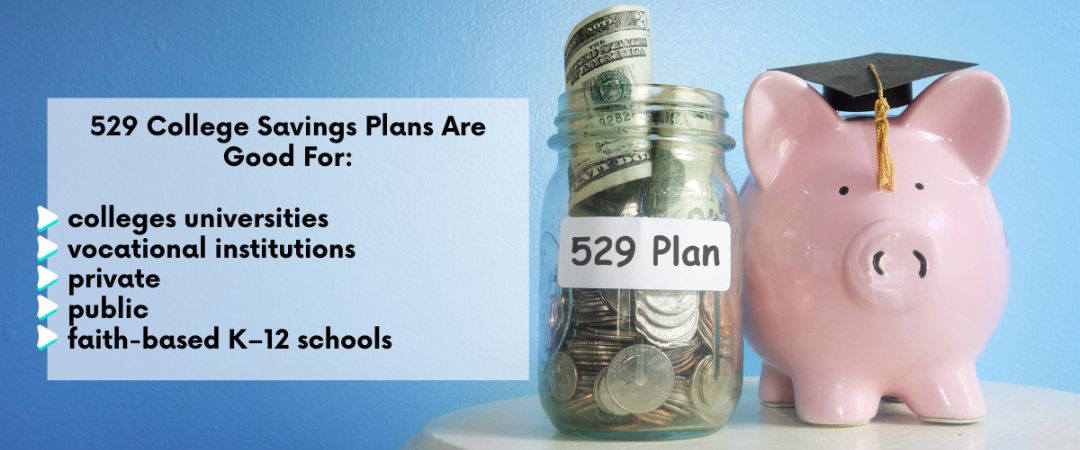“The trouble with retirement is that you never get a day off.” — Abe Lemons
Navigating the costs of education? ‘529 day’ might be your opportunity to get ahead. Held on May 29th, this day serves as a reminder to explore and benefit from 529 savings plans. So, let’s cut straight to how you can use 529 Day promotions to their fullest! Here are practical steps for both seasoned savers and newcomers to plan education funding more effectively.
Get started with The IFW’s Retirement Roadmap Services and learn how to ensure you never run out of money during retirement.
Key Takeaways
- 529 Day, celebrated on May 29th, is dedicated to increasing awareness and understanding of the benefits of 529 college savings plans, offering unique deals and promotions to maximize savings for future education costs.
- 529 plans are tax-advantaged savings accounts designed to help save for education expenses and can be used for a wide range of institutions. Also, contributions receive tax-free growth, and qualifying withdrawals are tax-free.
- Maximizing 529 plan contributions involves early and regular saving, utilizing 529 Day promotions for potential bonuses, considering family contributions, and choosing the right investment portfolio based on the beneficiary’s needs and investor’s risk tolerance.
Celebrating 529 Day: An Opportunity for Savvy Saving

529 Day serves as a special event that champions the life-changing potential of saving for education. It’s more than a mere celebration across the country. It represents an opportunity to concentrate on accumulating savings for educational purposes and to heighten awareness about the tax advantages offered by 529 plans.
This occasion is observed through online events that aim to enhance comprehension and inspire proactive steps towards amassing funds for impending educational expenses, which also cover costs related to trade or vocational school attendance.
What Exactly Is 529 Day?
May 29th stands out as a unique date, and for good reason – it’s not just any day. It’s intentionally chosen to mirror the 529 plan that it champions. Each year, on May 29th (5/29), we celebrate National 529 Day to spotlight the benefits offered by 529 college savings plans.
This special day is dedicated to encouraging families to take proactive steps in preparing for forthcoming college expenses. It emphasizes how crucial it is for families to start saving early and make saving an ongoing habit in order to manage future educational costs effectively.
Why 529 Day Matters for Your Savings Goals
Indeed, reminders play an essential role when it comes to our financial goals. The annual occurrence of 529 Day serves as a crucial cue for people to reassess their strategies for saving for education and update their savings goals. Yet, the importance of this day goes further.
Making contributions to 529 plans on 529 Day might coincide with unique promotions that can increase the worth of these savings. Many states provide incentives, including:
- Tax benefits
- Matching funds
- Scholarship opportunities
- Grants
Such perks may align with deposits made on 529 Day, offering an opportunity to amplify potential educational savings significantly.
Exclusive 529 Day Offers to Boost Your Education Fund

Everyone loves an excellent financial opportunity, especially when it comes to education savings. On 529 Day, you can access exceptional promotions that significantly boost your fund for educational expenses. Incentives range from special introductory bonuses for opening new accounts to matching of certain deposits made during the creation of new education savings plans on this day – these offers are designed specifically to fortify your account for education.
Babies arriving into the world on May 29th receive a monetary advantage right from their first breath with celebratory additions made directly into newly established 529 accounts in honor of their birthdate.
One-Day-Only Promotions

The excitement around 529 Day is amplified by the array of exclusive events held across different states for just one day. Highlights of these benefits feature:
- Waived fees to establish a new account
- Incentives like bonuses when arranging ongoing contributions
- Engaging sweepstakes, contests, and social media challenges that present fortunate individuals with contributions towards their college savings plans
- Unique promotions tailored for current owners of 529 plan accounts which may include giveaways and contests in honor of this special occasion
Such initiatives make 529 Day a particularly thrilling opportunity for prospective account owners aiming to set aside funds for higher education [1].
Long-Term Benefits of 529 Day Contributions
Joining in on the 529 Day celebrations extends benefits beyond just one-day specials. On this notable day, any contributions you make could benefit from tax-free growth potential, enhancing your long-term education savings prospects. Opening a 529 account during May might also land you with an additional perk: using a promo code for a $25 bonus match to new accounts and potentially earning another $15 when arranging automatic monthly contributions.
Taking part in the promotions associated with 529 Day allows you to take full advantage of the tax-efficient features of 529 plans, which include:
- bonuses for initiating new accounts or augmenting current ones
- special deals and reductions linked to educational expenditures
- access to tools and resources designed to assist with saving up for post-secondary education
Celebrating 529 Day acts as both a prompt and an educational moment that highlights ways to boost savings dedicated to higher education all year round [2].
Understanding 529 Plans: A Primer for Newcomers

A 529 plan represents a specialized savings account designed to support education-related expenses, offering both flexibility and tax advantages. These accounts are specifically tailored for those setting aside funds for education.
These 529 college savings plans can be established by anyone – including parents, grandparents, friends, or students who are at least 18 years old. With the exception of Wyoming, every state offers access to this form of college savings vehicle.
The Basics of a 529 Plan Account
A 529 plan serves as an investment vehicle, which is available in two main varieties: education savings plans and prepaid tuition plans. Both variants provide unique advantages for saving funds to cover future educational costs.
As part of the offerings from Arizona’s education savings scheme, a 529 college savings plan exists as a state-endorsed program aiming to assist people in setting aside money for a designated beneficiary’s impending education expenses. This form of plan boasts versatility, allowing use across various types of academic entities such as:
- colleges
- universities
- vocational institutions
- private, public, or faith-based K–12 schools.
Tax Advantages Associated with 529 Plans
529 plans offer a range of tax benefits, making them an attractive option for saving for education expenses. The key tax advantages include:
- Tax-deferred growth: Contributions to a 529 plan grow without incurring federal income taxes on the investment earnings, allowing money to accumulate over time.
- Federal tax exemption on withdrawals: When funds from a 529 plan are used for qualified education expenses, those distributions are exempt from federal income taxes, which underscores the benefit of the account’s tax-free expansion.
Many states offer state income tax benefits such as deductions or credits when you contribute to a 529 plan. This can serve to lower your state income taxes.
It should be noted that these state-specific benefits might hinge upon certain conditions like residency and alignment with specific regulations pertaining to state income taxation—factors that may influence overall eligibility and financial impact. These considerations underscore how potential variations in each individual’s circumstances affect one’s actual realization of said benefits within different jurisdictions.
How to Participate in 529 Day Successfully
If you’re interested in taking part in 529 Day and understand the benefits of 529 plans, getting involved is straightforward. You can engage by either initiating a new 529 plan account or boosting your current account with additional funds. There are typically special offers available during this day that might increase the worth of contributions made to these accounts.
For Existing Account Owners
Owning a 529 plan account, you should take advantage of 529 Day as the perfect occasion to evaluate your investments. This yearly assessment is essential for making sure that your investments remain within a 5% range of your intended asset allocation. To adhere to your initial investment approach, it may be necessary to rebalance your plan by channeling new contributions into assets that are currently underrepresented or by divesting from those that are disproportionately represented.
Opening a New 529 College Savings Plan
If you’re contemplating opening a 529 college savings account, then taking advantage of 529 Day is an ideal opportunity. The process to initiate a new 529 college savings plan includes selecting from various plan options, designating a beneficiary, starting the funding process for the account and determining an investment approach.
It’s important to note that each state in America along with the District of Columbia presents at least one version of a 529 plan. Many states extend extra tax benefits to those residents who choose to invest in their home state’s 529 plans.
Smart Strategies for Maximizing 529 Contributions
To maximize the benefits of a 529 plan, it’s essential to strategize your savings approach. Initiating contributions early and maintaining consistency in saving within a 529 plan is crucial for leveraging the power of compound growth. Timing your deposits around 529 Day enhances this strategy, allowing periodic investments to grow into a significant fund dedicated to education expenses.
Timing Your Contributions Around 529 Day
The timing of investments is crucial, and this holds particularly true for contributions made on 529 Day. Such contributions have the opportunity to grow over time and might also qualify for deductions from state taxes. National 529 Day brings additional advantages in some states where these contributions can be completely deductible from state income taxes, provided that they are spent on qualified education expenses.
Gift Contributions and Family Involvement


It’s a fact that your loved ones, including friends and relatives, have the ability to add funds to your 529 plan. They can opt for either single-time gifts or establish ongoing contributions, effectively becoming collaborators in the quest to save for educational expenses. What’s more, these financial additions are allowed to be tax-free up until an amount of $18,000 annually for each person giving in adherence with the gift tax exclusion set for 2024 [3].
On the other hand, should any individual exceed this annual threshold when contributing to a 529 plan, it becomes mandatory that such excesses are disclosed to the Internal Revenue Service through the submission of a federal gift tax return. Nevertheless, crossing this boundary does not automatically trigger an actual tax on gifts, given there remains ample room within one’s lifetime exemption limit before taxes kick in.
Investment Considerations for Your 529 Plan
Navigating the intricacies of investment management, especially with the goal of enhancing returns for your child’s education in mind, can be challenging. We are here to guide you through various aspects related to your 529 plan investments. From selecting among diverse investment options to comprehending your appetite for risk and making timely decisions, our assistance will simplify this journey for you.
Choosing the Right Investment Portfolio

It is essential to make a thoughtful decision when determining the appropriate investment portfolio for your 529 plan. Age-based investment options provide an attractive route, adjusting asset allocation towards more conservative investments automatically as the college start date approaches for the beneficiary. This strategy offers convenience and ease of management for investors.
Alternatively, static portfolios may be appealing if you are willing to accept greater risk or have a substantial amount of time before your beneficiary commences their college education. These allow investors to tailor their approach to investing within the 529 plan according to specific preferences or goals.
Reevaluating Investments on 529 Day
Bear in mind that 529 Day extends beyond simply making contributions. It serves as a perfect opportunity to reconsider your investment approach. This yearly moment for reflection presents the chance to:
- Review and possibly adjust the investment strategies of your 529 plan
- Verify that they align with your present appetite for risk
- Take into account the time horizon of the beneficiary
Withdrawing Funds: Paying for Qualified Expenses
It’s time to reap the benefits of your diligent saving and investing efforts. But, when it comes to accessing money from your 529 plan, how should you proceed? What expenses are considered eligible for these funds? We’ll explore these important questions so that you can maximize the use of your 529 plan funds while steering clear of any unwarranted penalties.
What Counts as Qualified Expenses?
A 529 plan enables you to take out funds free of tax for a myriad array of college-related costs such as tuition, fees, textbooks, computers and additional necessary materials. These plans are versatile enough to cover K-12 tuition expenses, certain apprenticeship program costs and even contribute towards student loan repayments.
Thus, whether it’s procuring a new laptop for your first-year college attendee, paying the tuition fees for your high school senior, or aiding in the management of student loan payments – your 529 plan is an all-encompassing solution when it comes to handling various educational expenditures.
Avoiding Penalties on Non-Qualified Withdrawals
529 plans provide a versatile way to save for educational expenses, but one must be cautious about making non-qualified withdrawals because they can lead to penalties and tax consequences. Should funds be taken out of a 529 plan for purposes that do not meet the definition of qualified expenses, both state and federal income taxes could apply to federal income tax on the earnings portion plus an extra 10% penalty.
There are specific situations where this penalty does not apply. These include instances when the beneficiary is awarded a scholarship or if they enroll in a US military academy.
Achieving Fiscal Prosperity: Navigating Financial Planning with the Institute of Financial Wellness
Navigating the complex world of financial planning may seem daunting, but rest assured, you have support. The Institute of Financial Wellness (IFW) is at your service to offer comprehensive financial education along with resources and services designed to help achieve your monetary goals. Through captivating and enlightening materials as well as a connection to an array of finance experts, the IFW aims to steer you towards fiscal prosperity throughout all life’s phases.
The IFW Retirement Roadmap Webinar is a comprehensive guide designed to help individuals maximize their retirement benefits. The webinar covers strategies for lowering or eliminating taxes during retirement, safeguarding your portfolio against market volatility, and maximizing retirement income to ensure a sustainable future. By participating in this webinar, you can gain valuable insights into effective retirement planning, empowering you to make informed decisions and enjoy a worry-free, financially secure retirement.
Discover how close you are to reaching your retirement goals with the Retirement Score, a unique and innovative tool designed to help you assess your retirement readiness. This patent-pending system provides a clear evaluation of your progress toward your income goals in retirement, allowing you to plan with confidence and make any necessary adjustments. By understanding your Retirement Score, you can take proactive steps to ensure you achieve the financial security you need for a comfortable and worry-free retirement.
Full Summary
Securing your child’s educational future may seem daunting, but it is entirely feasible with proper resources and understanding. 529 Day offers a prime chance to concentrate on education savings while capitalizing on the tax benefits provided by 529 plans. This day can markedly bolster your education fund, whether you already manage an existing account or are contemplating establishing a new one. Keep in mind that through prudent planning, steady early contributions, and strategic employment of 529-day opportunities, you’re able to convert routine contributions into a significant education reserve.
Frequently Asked Questions
What is 529 Day?
Annually, on May 29th, families are encouraged to plan ahead for future education costs by celebrating 529 Day, which highlights the advantages of enrolling in 529 college savings plans.
What are the benefits of participating in 529 Day?
Engaging in 529 Day presents an opportunity to take advantage of unique promotions and benefits, which serve to enhance your education fund by enabling contributions to increase in value tax-free, thus ensuring greater savings over time.
What is a 529 plan?
An education savings account known as a 529 plan offers flexibility and tax advantages, presenting tax benefits specifically designed for saving towards education.
How can I maximize my 529 contributions?
Begin contributing to a 529 plan as soon as possible and maintain steady savings efforts to take full advantage of compounded growth. Aligning your contributions with 529 Day may yield extra benefits.
What counts as qualified expenses for a 529 plan?
A 529 plan covers a broad range of college expenses including tuition, fees, books, computers, and additional necessary materials. It also extends to certain K-12 tuitions, apprenticeship costs, and repayments for student loans. Be sure to examine the particular rules associated with your plan carefully.




